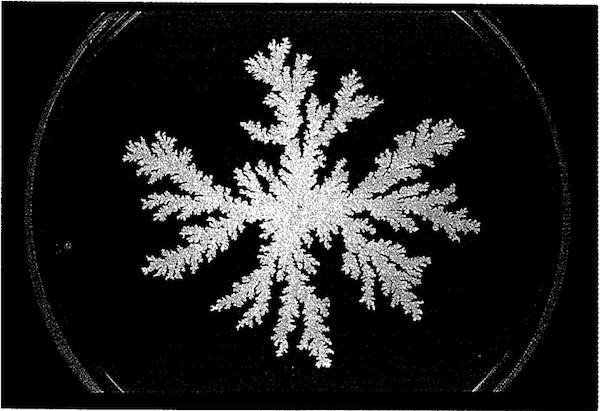Bacteria Pictures By Fernan Federici
 Fractal growth of B. subtilis, from Fujikawa and Matsushita, Journal of the Physical Society of Japan, 1989.
Fractal growth of B. subtilis, from Fujikawa and Matsushita, Journal of the Physical Society of Japan, 1989.These fractal colonies are formed by the soil bacteria Bacillus subtilis, forming different shapes depending on the conditions of the petri dish, the presence of nutrients and the humidity. Depending on these external conditions and the rules of how the cells grow and respond after bumping into each other, amazing patterns can emerge.
Fernan Federici, a researcher in the Haseloff Lab at Cambridge University and one of the Synthetic Aesthetics residents, studies how cells grow and develop into complex shapes and structures. Using confocal microscopy, he tracks the growth of plant cells and tissues, creating models of how cell structures form and beautiful images, including two winners of the Wellcome Image Awards in 2011.
In collaboration with computer scientist Tim Rudge, Fernan also studies how patterns form in B. subtilus colonies and biofilms, with the goal of eventually being able to modify the rules of how these cells interact to design new emergent patterns. His images of the fluorescent bacterial cells are incredible, and you can begin to see how complex patterns form from the interaction of growing cells at high magnification:

To the interaction of two growing cell-types, one tagged with a red fluorescent protein and one green:

And zoomed out further with more colors added, creating patterns that look like Missoni fabric (and that I would love to have a dress made out of):





For more amazing photos, check out Fernan’s plant or bacteria images on his Flickr page.
(via freshphotons)


